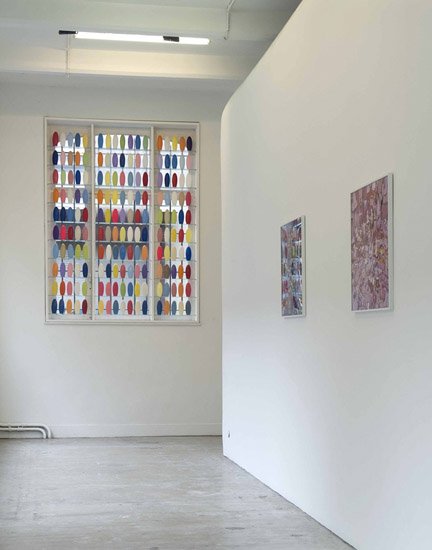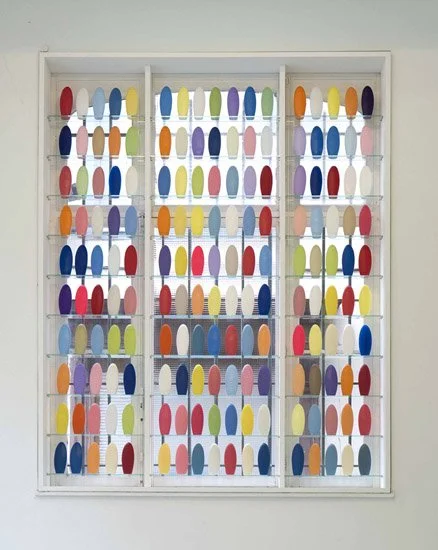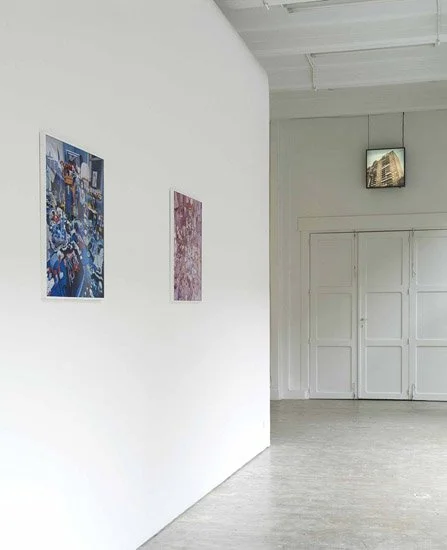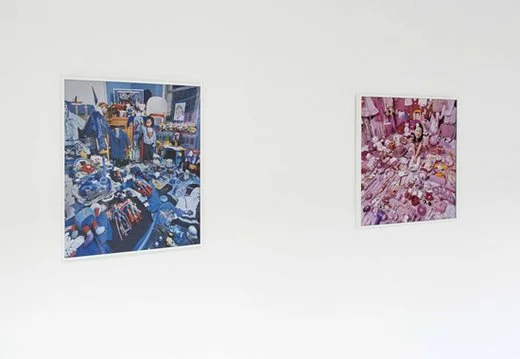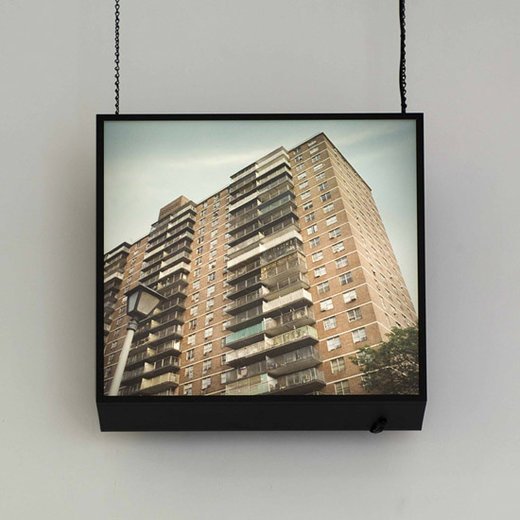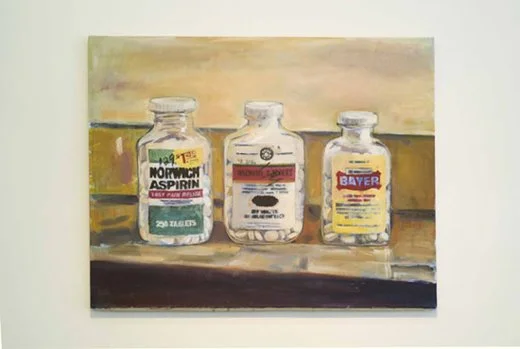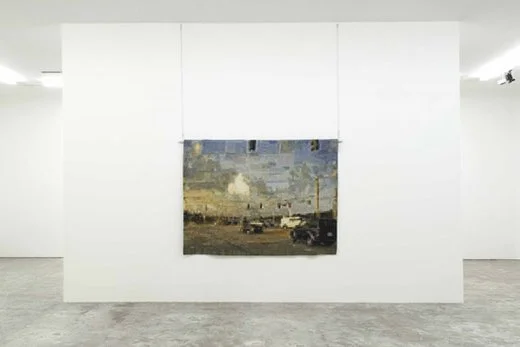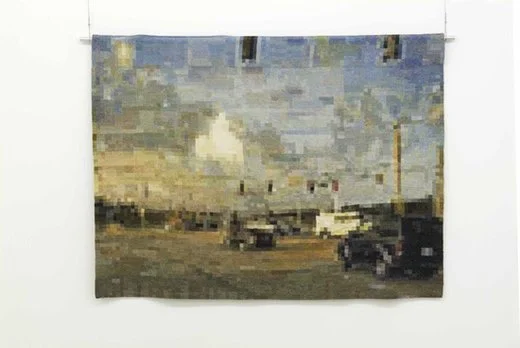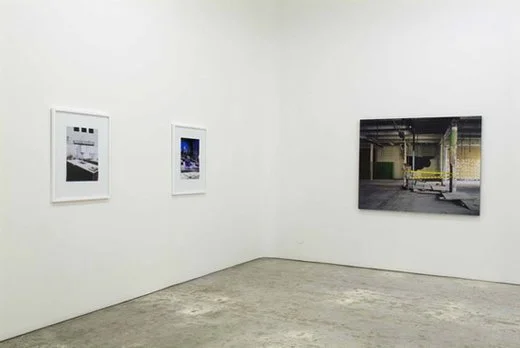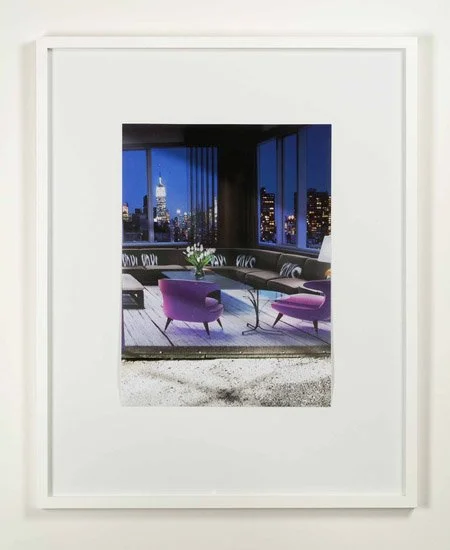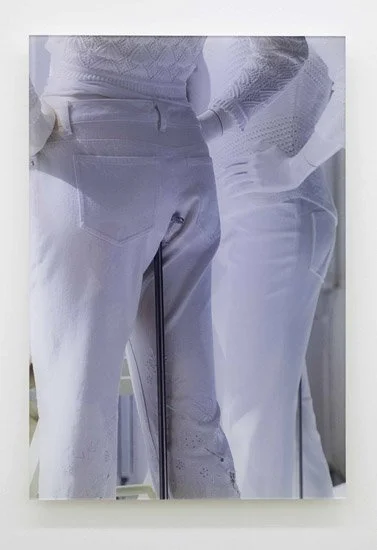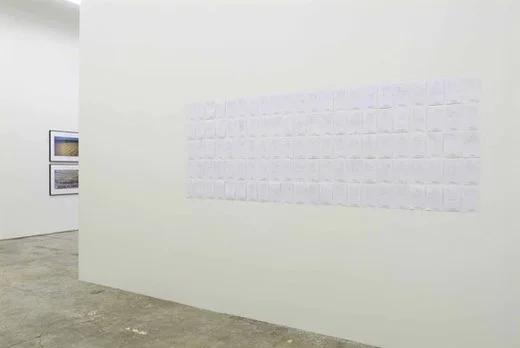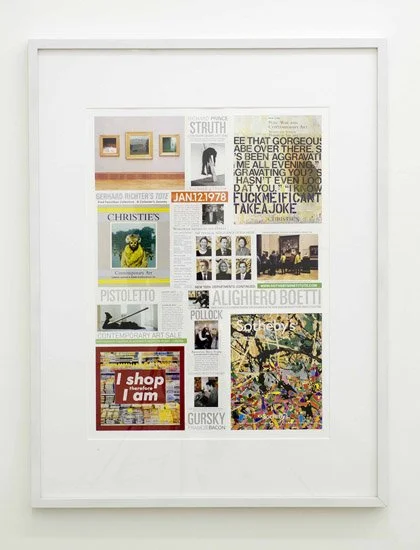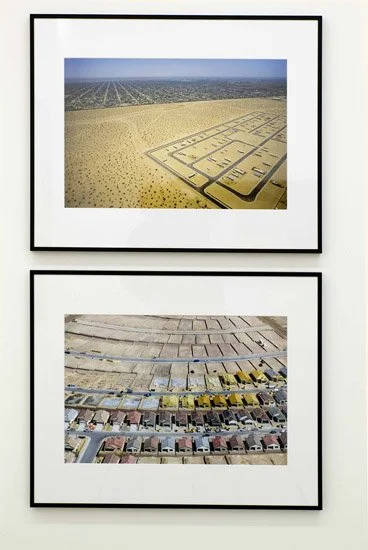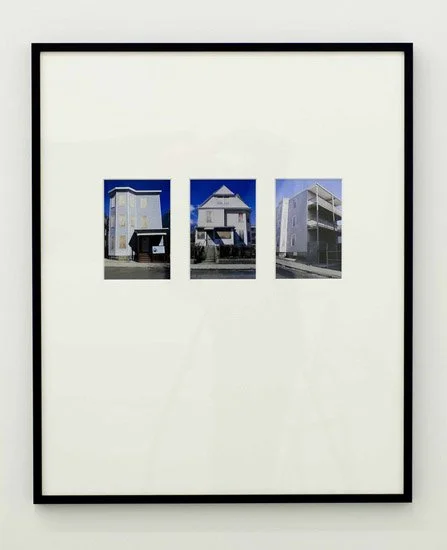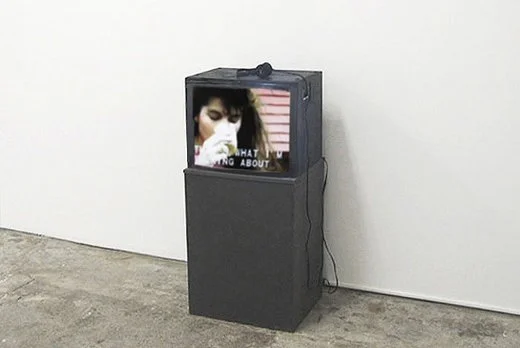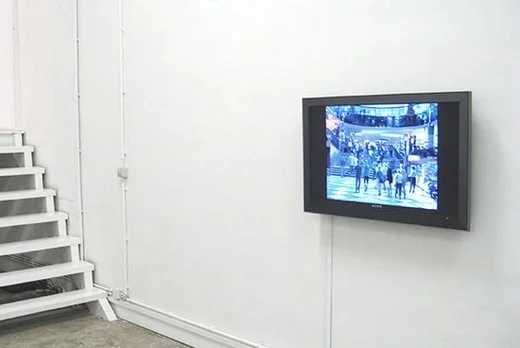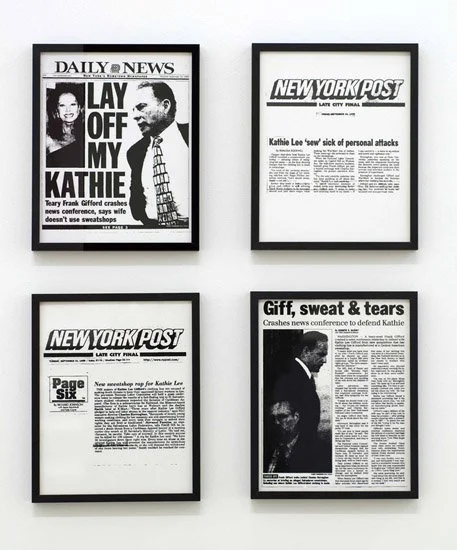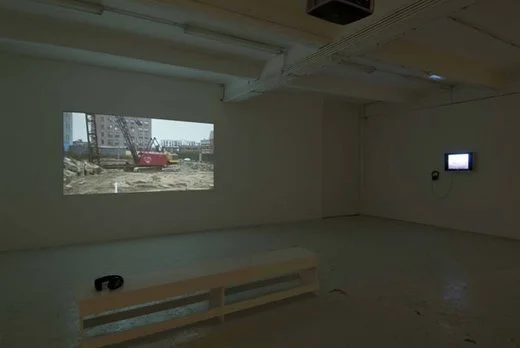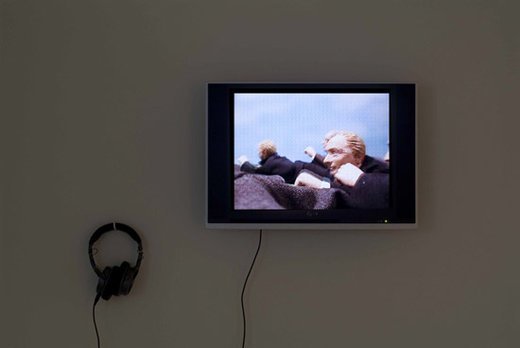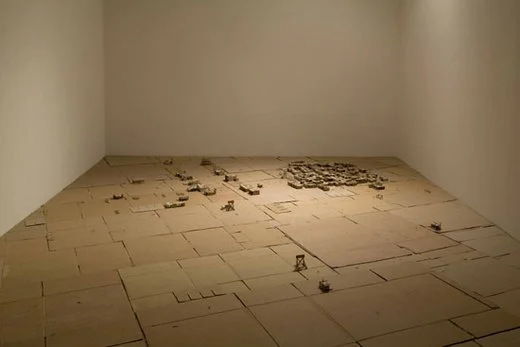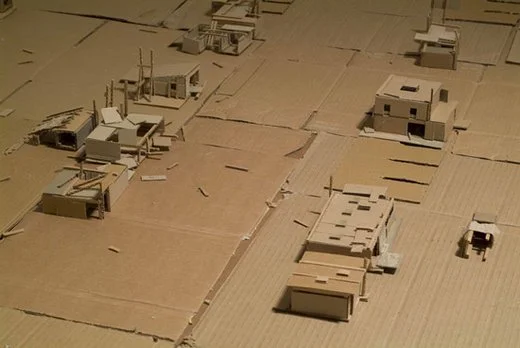Market Forces
Part 1 and 2
at Galerie Erna Hecey
May 28, 2009 - August 8, 2009
Michael Ashkin
David Baskin
Betty Beaumont
Gretchen Bender
Dara Birnbaum
Dan Graham
Louise Lawler
Alex MacLean
Diane Nerwen
Filip Noterdaeme
Walter Robinson
Ron Rocheleau
Zoe Sheehan Saldana
Heidi Schlatter
Peter Scott
Monika Sziladi
Momoyo Torimitsu
JeongMee Yoon
Market Forces, Part 1/ Consuming Territories, and Market Forces, Part 2/Consumer Confidence, were first presented at carriage trade in New York in the winter and spring of 2008, and will be shown together at Galerie Erna Hecey in Brussels in May 2009. A short excerpt from the original press release appears below:
Market Forces addresses the euphoric consumer culture of the last decade that manifested itself in a seeming overflow of goods and services and an explosion of luxury housing development that now dominates the urban landscape. The term is derived from laissez-faire economic theory and refers to a hands-off approach to the ʻnatural orderʼ of supply and demand. Used in this context, it is meant to invoke skepticism concerning the almost religious belief in, and militant protection of, our god-given right to consume. This two-part exhibition is intended to be as inclusive as the market is pervasive, with work that addresses the influence of consumerism on personality, labor, politics, and the built environment.
First developed as a text in late 2007, the concept for Market Forces was, in part, a response to the overwhelming dominance of the neo-liberal economic model on social and cultural conditions in the U.S. and abroad. As the housing and consumer bubble grew to historic proportions, the American media repeatedly endorsed the notion of limitless economic expansion. Any doubts about the risks of bundling fraudulent housing loans and tossing them into the global financial stream for short term gains or to question the amount of debt consumers could hold were seen as ʻspoiling the partyʼ and were rarely expressed on prime-time TV. Anchors on financial news shows functioned as cheerleaders for the boom, smugly nodding their heads up and down with every rise in housing prices or the Dow. Dozens of housing related reality shows appeared on cable TV with names like ʻFlip This Houseʼ, featuring opportunistic contractors who ʻspruced upʼ homes of marginal character and doubled the price for the next in line to cash in on skyrocketing prices before the music stopped.
Meanwhile, urban communities across the country were being uprooted by rampant speculation, as real estate developers offered lifelong residents piles of money to ʻcash outʼ, tearing down their houses and replacing them with ersatz modernist ʻluxuryʼ condos. Many who stayed took out risky but instantly lucrative mortgages, which lead to purchases of SUVʼs and whatever could be stuffed into them. Every year of the boom offered a new round of Christmas-time mayhem, as consumers fought for their right to shop. As shopping mall doors opened in the early morning hours of Black Friday, those shoppers unfortunate enough to stumble through first were occasionally trampled in the mad rush to be the first to get a deal on the newest Xbox.
The original presentation of Market Forces examined the decade long economic boom in what, in retrospect, appears to have been the moment of its peak. Linking the built environment and commodity culture, which too often had been seen as separate phenomena, these exhibitions focused on the social and psychological effects on a society enthralled with the consumerist ethos, a state of mind that is as short on memory as it is long on optimism. With constant media reports of a global economy stuck in reverse, the ʻpanic of 09ʼ threatens to displace the origins of a crisis which brought the ʻthreatʼ of nationalization to the U.S., where government intervention in business affairs was once considered heresy. Given the reluctance of societies in the midst of market euphoria to entertain skeptical views, perhaps this is now the moment to reflect on the social aspects of economic relations often overlooked during the decade-long boom.
Exhibition view
Photo Philippe De Gobert
David Baskin
Untitled (Dove Bottles) (detail), 2008
urethane resin, 278 x 210 x 30 cm
David Baskin
Untitled (Dove Bottles) (detail), 2008
urethane resin, 278 x 210 x 30 cm
Exhibition view
Photo Philippe De Gobert
JeongMee Yoon
(left) Ethan and His Blue Things, 2006
(right) Seohyun and Her Pink Things, 2007
light jet prints, 77.9 x 77.9 cm (each)
Heidi Schlatter
Residential Towers, Williamsburg, Brooklyn, 2000
duratrans in light box, 61 x 61 cm
Heidi Schlatter
Residential Towers, Williamsburg, Brooklyn, 2000
duratrans in light box, 61 x 61 cm
Exhibition view
Photo Philippe De Gobert
Walter Robinson
Pain Killers, 2008
acrylic on canvas, 75.8 x 61 cm
Zoë Sheehan Saldaña
America’s Most Dangerous Intersection (Pembroke Pines, Florida, 2001), 2004
wool and cotton, 172.5 x 228 cm
woven by craftsmen at the Taller Mexicano de Gobelinos, Guadalajara, Mexico
Zoë Sheehan Saldaña
America’s Most Dangerous Intersection (Pembroke Pines, Florida, 2001), 2004
wool and cotton, 172.5 x 228 cm
woven by craftsmen at the Taller Mexicano de Gobelinos, Guadalajara, Mexico
Louise Lawler
(right) Overcast: Caution, 1996
cibachrome mounted on museum box, 121 x 151.7 cm
Peter Scott
Alfresco Kitchen, 2009
archival inkjet print, 79.4 x 64.3 cm
Peter Scott
Purple Chairs, 2009
archival inkjet print, 79.4 x 64.3 cm
Filip Noterdaeme
MoMA HMLSS, 2005
mixed media, 43 x 47.6 x 42 cm
Exhibition view
Photo Philippe De Gobert
Monika Sziladi
White People, 2005
c-print mounted with plexi, 75.7 x 50.8 cm
Exhibition view
Photo Philippe De Gobert
Ron Rocheleau
Untitled, 2008
paper, 105.9 x 80.1 cm
Alex MacLean
(top) United States and Mexico Border, San Luis, AZ, 1995
c-print, 61 x 76 cm
(bottom) Housing Developments at Different Stages, Las Vegas, NV, 2005
c-print, 62.3 x 77.4 cm
Betty Beaumont
Sub-Prime America, 2008
archival inkjet, 86.8 x 71.6 cm
Betty Beaumont (detail)
Sub-Prime America
archival inkjet, 34" x 28", ed. 1 of 5, 2008
Dara Birnbaum
Fire! Hendrix, 1982
color & sound, 3:13 min video loop
courtesy of Electronic Arts Intermix
Dan Graham
Death by Chocolate: West Edmonton Shopping Mall (1986-05), 2005
color & sound video, 8 min loop
courtesy of Electronic Arts Intermix
Momoyo Torimitsu
Somehow I don’t feel Comfortable (Nanka Igokochi Waruinda), 2000
inflatable ballon, ventilator, vinyl tube (step-down transformer), 480 x 450 x 450 cm
Archival Material
(Kathy Lee Gifford), 2008
c-print, 26.5 x 21.5 cm
Diane Nerwen
(left) Open House, Charpter 1: Removal, 2008
looped video, 10 min
Momoyo Torimitsu
Horizons (Mini-Businessmen), 2004
looped video, 4:47 min
Michael Ashkin
Untitled (where the toll for dreaming is exacted daily upon awakening). [an abridged title, the first of twenty-one lines], 2008
cardboard, dimensions variable
Michael Ashkin
Untitled (where the toll for dreaming is exacted daily upon awakening). [an abridged title, the first of twenty-one lines], 2008
cardboard, dimensions variable

